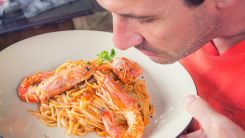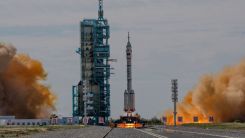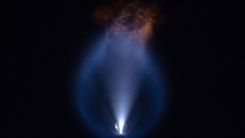
Aubrey Clarke

French Astronomer Thomas Pesquet Captures Stunning Aurora Glowing To Earth From ISS

NASA Says There Are At Least 5 Fireballs Recorded Flying Over United States

Devastating Floods in Mars Helped Shape Famous Deepest Canyons on Red Planet
Can NASA James Webb Space Telescope's Atmosphere Detection Feature Find Life? Here's What Experts Say

COVID-19 Anosmia Cure: Vitamin A Nasal Spray, Drops Could Help You Get Back Your Sense of Smell

Elon Musk Tells Jeff Bezos That Blue Origin's Legal Fight with NASA Won't Guarantee Its Way To Moon
NASA Mars Missions Will Be Quiet For 2 Weeks to Protect Spacecraft From Solar Conjunction 2021
NASA's Lucy Mission Going to Space Soon to Probe Jupiter’s Weird Trojan Asteroids
Fireball Spotted Flying Over North Carolina Sky; Meteor Traveling at 32,000 Mph

How Can Mild COVID-19 Make Your Brain Smaller? Scientists Explain

China's Kuaizhou 1A Launches Earth-Observation Satellite Atop Long March 3B Rocket

Einstein Ring Explained: Age of NASA Hubble Space Telescope Recent Discovery Is 9 Billion Years Old!
NASA Finally Launches Powerful Landsat 9 Satellite to Continue 50-Year Legacy of Earth Observation

COVID-19 Most Effective Face Mask Combinations, Comparisons: Wearing One Can Still Protect You Even If Nobody Is

Space Update: 20 Women Will Be Spending 5 Days in Bed to See Effects Of Spaceflight on Human Body

NASA Mars Perseverance Shares Rover’s Busy Day on Red Planet With a Selfie
Can NASA Get Water From Moon, Mars? Virginia Tech Thinks So!

Researchers Will Soon Launch a $4 Million Cereal Box-Sized Satellite to Space to Examine Planet Evolution, Exoplanets
NASA Landsat 9 to Launch via United Launch Alliance Atlas V Rocket; Here’s What This Earth Observation Satellite Will Do
SpaceX to Add More Crew Dragon Fleet As Cargo Ship Will Bring 4,600 Pounds of Supplies to ISS
Tesla's Elon Musk Says EV Company's Main Hurdle Is Chip Shortage, But CEO Is Positive That It Will Be Solved Short Term

Elon Musk's SpaceX Alarm Rang During Inspiration4 Trip Due to ‘Challenges’ With the Toilet; What Really Happened?
NASA Hubble Space Telescope Detects Einstein Ring; What Makes This Special? [WATCH]

NASA InSight Mars Lander Detects 3 Massive Earthquakes in Red Planet, Records Strongest Marsquake at 4.2 Magnitude

COVID-19 Might Give You a Rare Chance of Having Guillain-Barré Syndrome That Results to Muscle Weakness

NASA to Release James Webb Telescope Soon; Will This Compete With Roman Space Telescope?
Is There a 500 Light-Years Wide Giant Hole in Milky Way? Here's What Astronomers Found

SpaceX Inspiration4 Crew Now Back on Earth; Shares Stunning Footage of Planet During Historic Flight

NASA Boeing Starliner Update: Test Launch Might Lead to 2022 As Module Needs Replacement
Most Popular

Starlink Satellite Explodes in Orbit; SpaceX Confirms It'll Re-Enter Earth

Aurora Phenomenon: How Geomagnetic Storms and Space Weather Are Lighting Up the World

Ocean Warming Explained: Why Climate Science Shows Sea Temperature Rise Is Speeding Up

How Wildfires Start, Spread, and Ignite: Understanding the Causes and Fire Behavior Clearly




